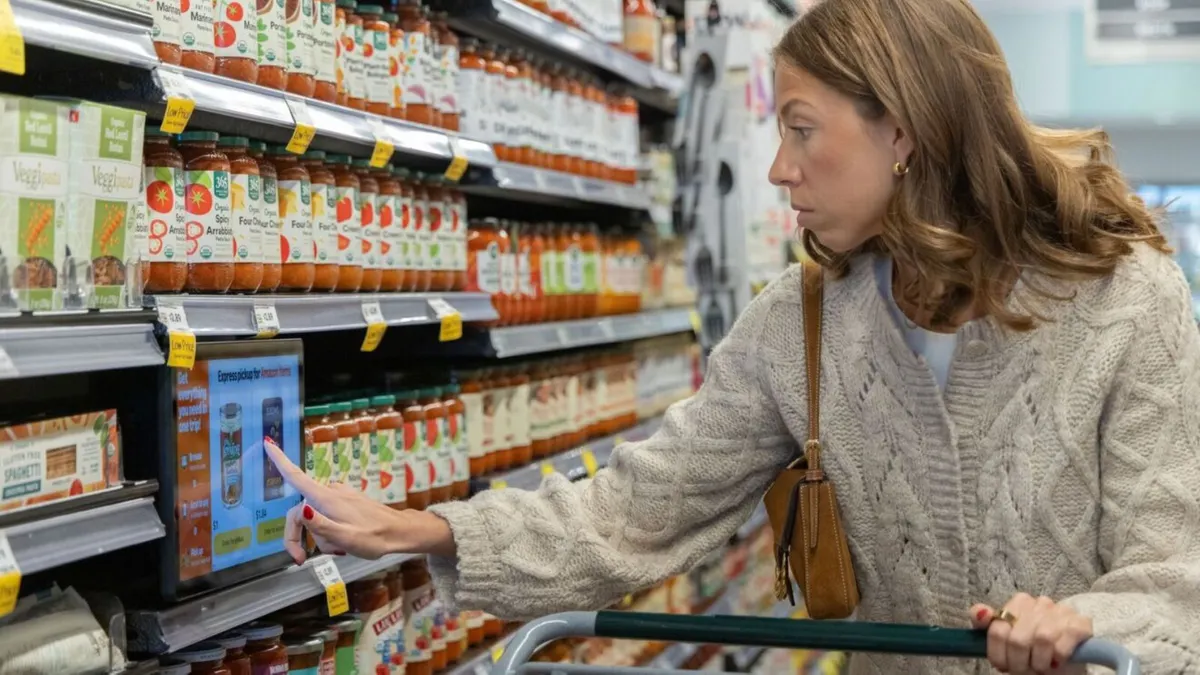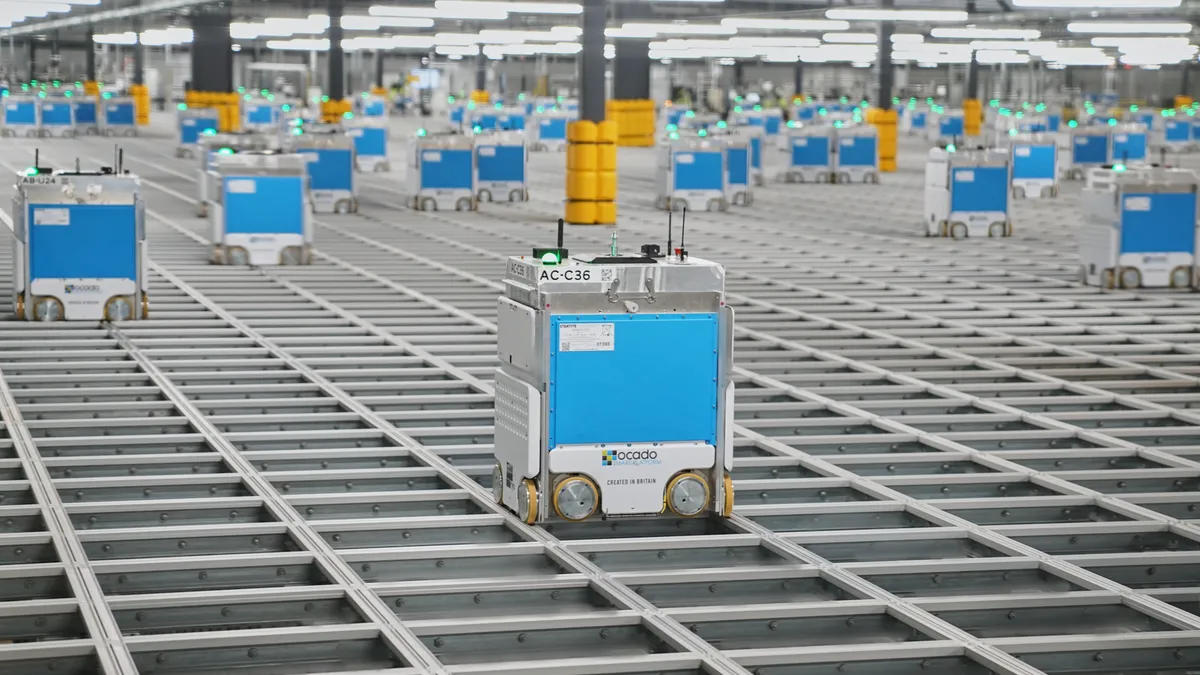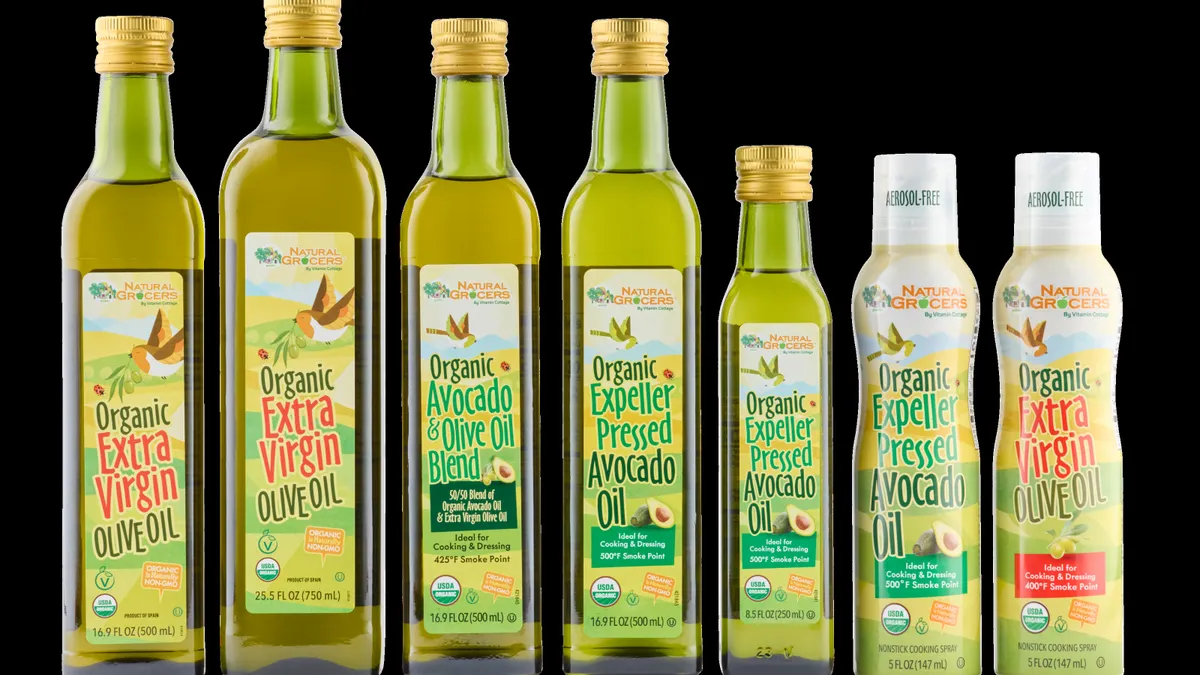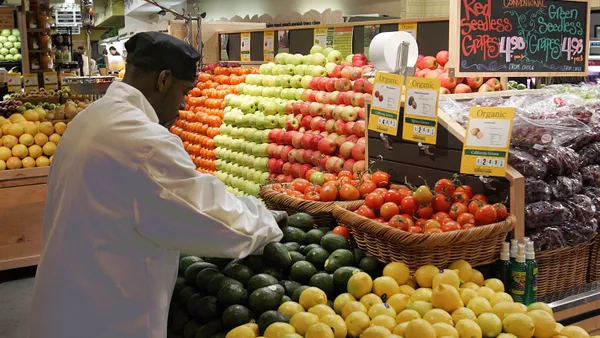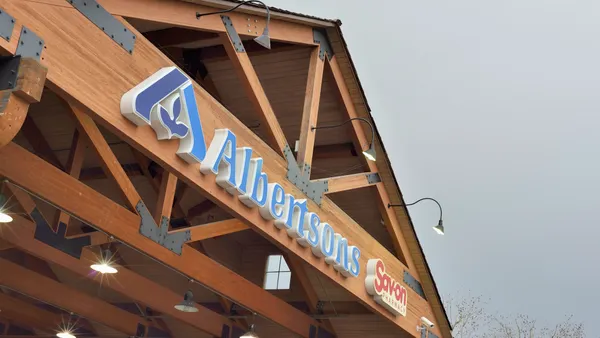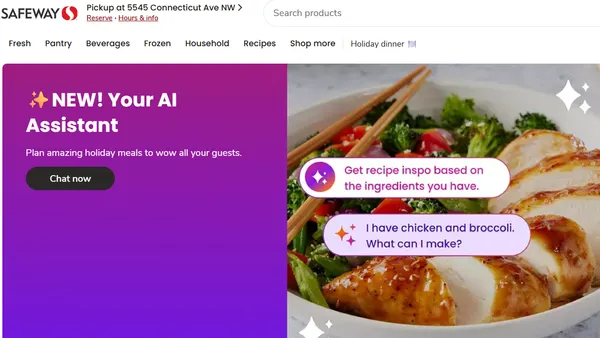Whole Foods Market and Amazon’s ongoing combination is becoming more apparent to consumers thanks to an eye-catching new in-store shopping test.
Last week, Amazon announced it opened an automated micro-fulfillment center at a Whole Foods location in Plymouth Meeting, Pennsylvania, to offer conventional grocery items in what Amazon calls a “store within a store” experience.
As Amazon’s attempts to establish a brick-and-mortar grocery business over the past few years have failed to take hold, the company is further leaning into Whole Foods, the more successful banner in its grocery profile. While shoppers at the specialty grocer are used to seeing Prime deals and other elements of its corporate owner, now they can see Amazon’s advanced technology and assortment on full display.
Introducing an automated MFC to a Whole Foods store allows Amazon to flex its strengths in digital innovation and fulfillment within an already trusted banner. The company also emphasized that this initiative aims to make shopping more convenient for Whole Foods’ customers.
The in-store MFC spans 10,000 square feet and holds more than 12,000 Whole Foods and Amazon grocery items. In-store customers can scan QR codes on digital screens throughout the store to purchase products not on Whole Foods’ shelves and pick them up at a designated counter. Amazon said that the orders are often ready in under 10 minutes.
Amazon noted that as it collects feedback from the Pennsylvania location, it will refine and expand the store format.
But how will this move impact Whole Foods, which promises that the food and household essential products it carries meet high standards for quality, supply chain transparency and natural ingredients.
Will offering items like Pepsi and Oreos — even if they’re not stocked directly on store shelves — harm the reputation and trust Whole Foods has established with shoppers?
Neil Saunders, GlobalData Retail managing director, doesn’t think so. In emailed comments to Grocery Dive, he said that while the move by Amazon and Whole Foods “may seem radical…it’s not all that dramatic.”
Saunders views this move as a compromise between Amazon and Whole Foods, and so long as Amazon doesn’t compromise the specialty grocer’s quality standards, introducing mainstream food, beverage and household essential brands likely won’t bother consumers. And, because those conventional items won’t appear on shelves, shoppers can choose to stick with only purchasing Whole Foods-approved items.
“In many ways, Amazon is simply following the customer,” Saunders wrote. “A majority of Whole Foods shoppers already buy some mainstream brands that Whole Foods does not stock, and they currently do so from retailers like Target and Kroger.”
Stewart Samuel, director of retail futures at retail market research firm IGD, pointed out in an interview last week that many Whole Foods shoppers are already buying the conventional items Amazon is introducing — so he’s not convinced it will hurt the specialty retailer’s image.
But Samuel said the format doesn’t offer the most seamless experience for in-store shoppers. While online customers will be able to make one basket and complete one payment for their specialty and conventional grocery needs, in-store shoppers are tasked with scanning QR codes and then picking up items at a separate in-store counter.
Anne Mezzenga, co-CEO of retail blog and podcast Omni Talk Retail, believes this change hinders Whole Foods’ image.
There is still value in being a store with a mission and offering a curated product assortment, Mezzenga said in an email, giving a nod to Trader Joe’s and Sprouts Farmers Market’s ongoing success and expansion. Mezzenga isn’t sure that offering conventional products is an effective way for Whole Foods to differentiate itself, she said.
“You just made it MY job as a customer to figure out the quality of the products on your shelves, so now I head to Sprouts or my local co-op instead,” she said, adding, “We’re looking at the beginning of the end of Whole Foods if this presses forward.”


